How to propagate remontant raspberries?
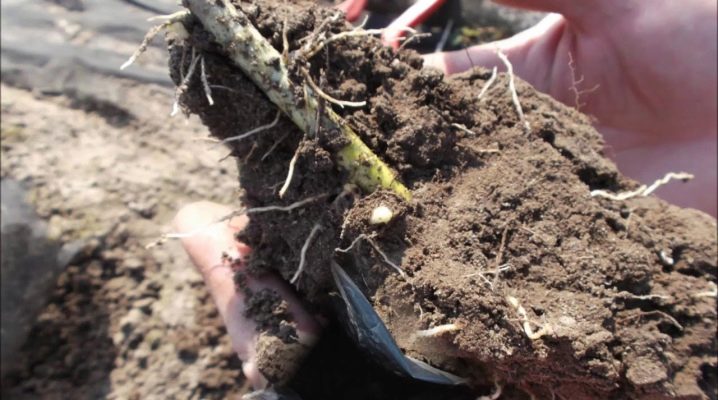
The desire to learn how to propagate remontant raspberries arises among summer residents quite often, because re-fruiting varieties of berry bushes are especially popular among gardeners. Usually, for these purposes, the division of the uterine bush, performed in the fall, is used, but other methods may seem more convenient to beginners. A detailed review will help beginners to easily breed raspberries with cuttings, and will also allow you to learn more about the propagation of this plant by root suckers or "nettles".
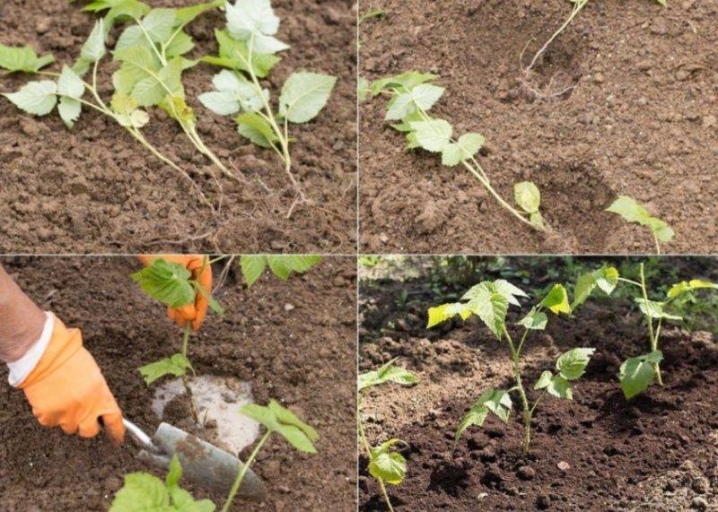
Timing
When planning to multiply remontant raspberries, you should determine the optimal timing of the work from the very beginning. Shrubs that bear fruit twice during the season have one important quality - long harvest times. The berries on them are preserved almost until the very frost. But the bushes themselves give very few replacement shoots and root processes. When choosing the time to obtain planting material, it is better to take this factor into account.
You can propagate remontant raspberries in autumn and spring. Planting for the winter is very rare. Autumn time is used to place cuttings harvested in the summer into the ground.
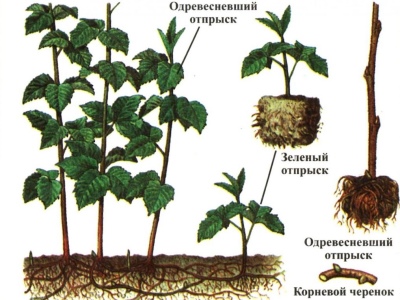
They are cut from two-year-old bushes, selecting the central shoots, and then dividing them into segments. The cuttings are rooted, and the part remaining in the ground begins to actively increase the volume of the root mass.
Spring is considered the best breeding season for remontant raspberry varieties. Young plants have enough time for rooting, they do not freeze in winter, they grow well. In this case, the gardener has a lot of opportunities to choose the method of obtaining planting material.
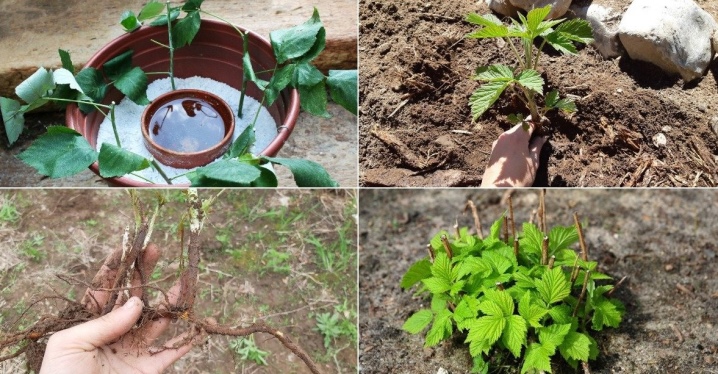
Propagation by cuttings
If you need to quickly propagate remontant raspberries, the easiest way to do this is by cuttings. In this case, the cultivation of young plants can be carried out starting in autumn. Only root cuttings are left for planting in the spring, even if harvested in the pre-winter period. The rest of their species take root well in the fall.
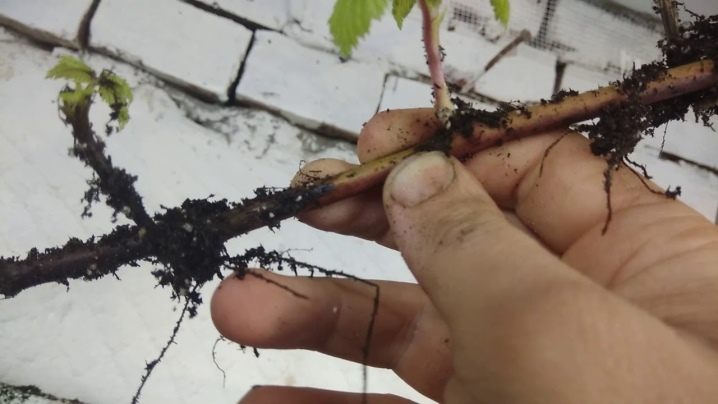
Root
This is the name of the processes that form on the rhizome of the plant. Well-developed fragments with a diameter of 2-5 mm are suitable for cutting. They are separated from the mother plant with a sharp garden knife, previously disinfected. Then the resulting root cuttings are divided into fragments of 10 cm, placed in a container of small depth, filled with a substrate from a mixture of turf, peat and humus.
Since germination takes place horizontally, large containers are not needed.
Enough of such a reservoir, which will fit a small layer of substrate and cuttings, lightly sprinkled with garden soil. Seedlings germinate after watering, under glass, in a well-lit place. It is important to maintain the temperature regime in the range of + 20 ... 25 degrees Celsius. Transplanting raspberry cuttings into the garden is carried out after their independent shoots reach a length of 50 mm or more.
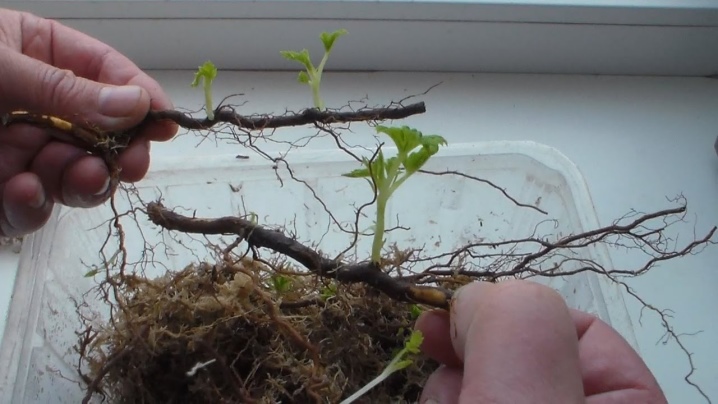
Green
This type of planting material is obtained in the summer. Green cuttings are harvested in the summer months, taking them from the base of the bush, as close to the roots as possible. It is important to select healthy shoots, strong and clean, free from pests or diseases.
Follow a simple scheme.
- Separate the cuttings from the bush with a sharp knife. Cut them into pieces 100-150 mm long.
- Put the harvested green cuttings in a container with water... Add a few drops of any suitable root stimulant to the liquid.
- The water needs to be changed periodically. After the appearance of well-developed roots on the cuttings, you can transfer them to a permanent place, in the open ground.
Green cuttings are the best choice for fall planting.
Young plants will need to be watered immediately, and nitrogen fertilizers should be added to the wells.
Fruiting from such a growth can be expected as early as 3 years after planting.
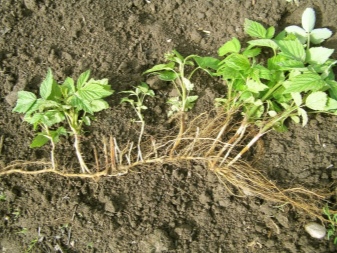
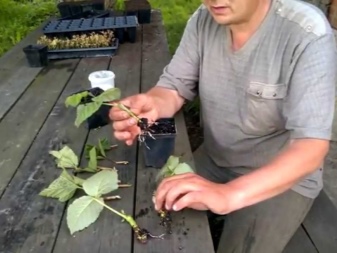
Stem
Annual shoots harvested in the fall are suitable for this breeding method.... They will have time to woody by this time. Cuttings are cut into longer ones, 30 cm each, with several buds on each. Separation from the mother bush is made with a sharp, sterile knife, slightly at an angle at the bottom and in a straight line at the top.
Stem cuttings are planted exclusively in spring. The harvested planting material is freed from leaves, tied in bundles of several pieces, and then added dropwise for the winter in a basement in wet sand.
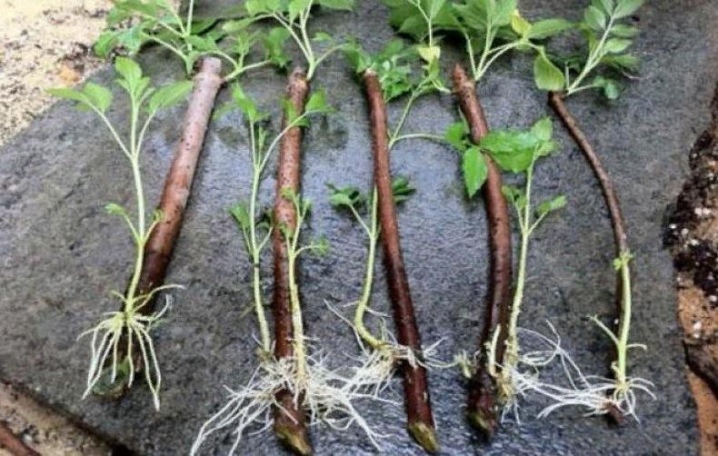
The big disadvantage of this method of cuttings is the low percentage of rooting of shoots.
To increase this indicator, annual stems, cut into pieces, are kept in a container with water and a growth stimulator. Suitable "Kornevin", as well as similar compositions... Cuttings that have already given roots are transferred to a new place in separate containers with a nutrient substrate. They are taken out to the garden only after the appearance of 3 real leaves.
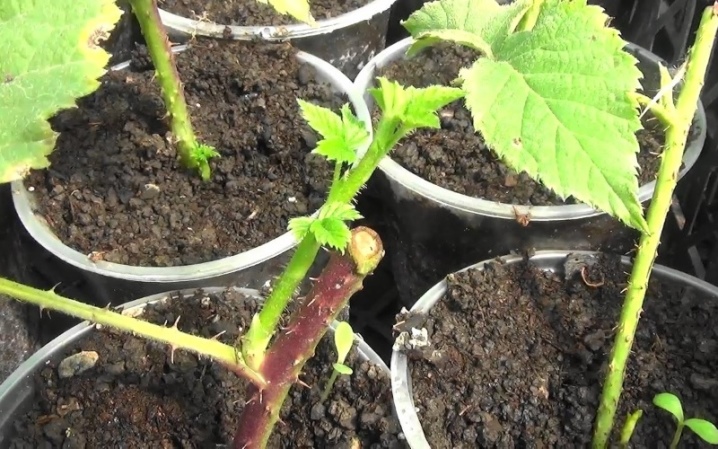
How to dilute by dividing the bush?
Repaired raspberries give root growth rather weakly, and cuttings in its various varieties do not always take root well. For novice gardeners, an easier solution may be to propagate this plant by separating parts from the mother bush. Although it does not give a high survival rate, it allows you to quickly and effectively rejuvenate the plantings, increase their area.
The main condition for the successful cultivation of raspberries by dividing the bush is to carry it out during the period when the sap flow has already ended, that is, in late autumn or early spring, before the buds awaken.
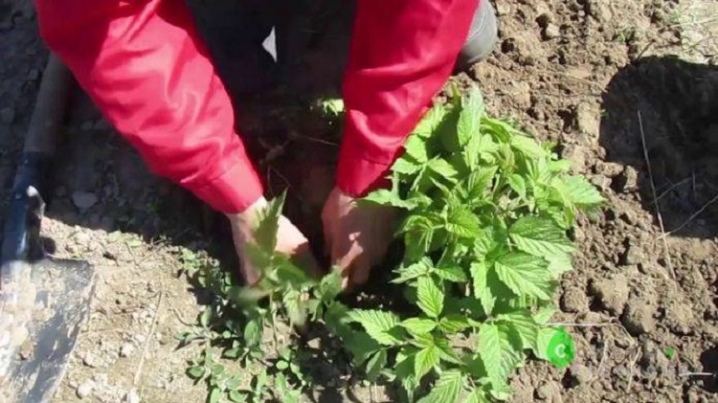
Let's consider the procedure in this case.
- Digging up the selected bush... It is completely removed from the ground, freed from adhering lumps of soil.
- Preparation... At this stage, the root system of the plant is thoroughly washed with running water. This will facilitate the subsequent work.
- Division... Spread the bush on an oilcloth or other clean, even bedding. Cut it into several pieces with 2-3 rhizomes and stems each. The larger the segments are, the higher the chances of survival.
- Preparation of pits. They are dug to a depth corresponding to the length of the roots. They are filled with a fertile substrate from a mixture of ash, sand, peat and compost.
- Landing... The divided segments of the bush are placed in prepared pits, their roots are covered with earth.
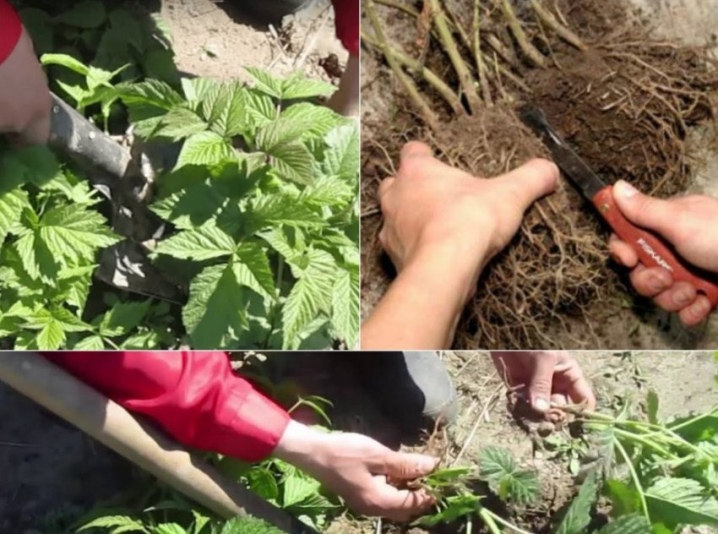
In a new place, plants require regular watering, periodic fertilization. Under favorable conditions, they grow well in the spring.
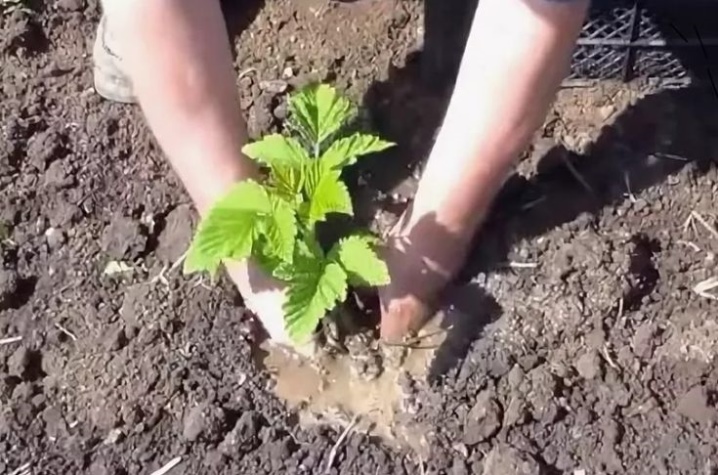
other methods
There are several ways at once that allow you to get a new shoot of remontant raspberries in the garden in a short time. Seeds are used very rarely for these purposes, since they give low germination. In addition, the cycle from seed to bush will take several years. It will be much easier to use ready-made shoots, giving them a new direction of development. Such breeding methods deserve special attention.
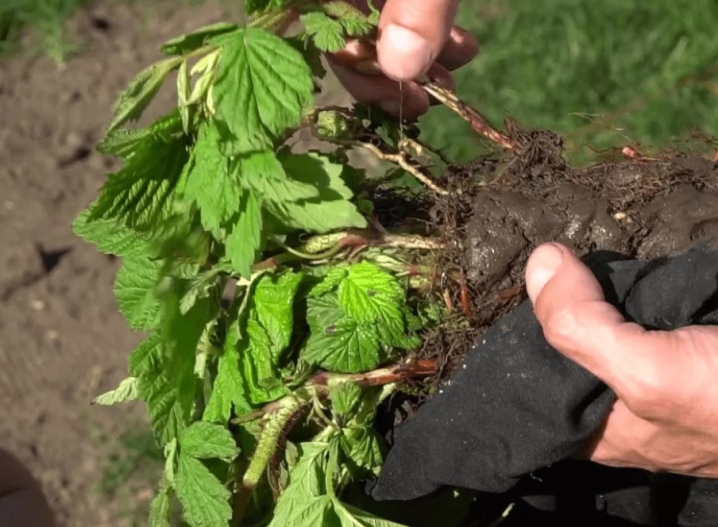
Formation of horizontal layers
This breeding method is used in the spring and summer season. They choose young stems for it before flowering or lignified shoots of the second year, located on the shaded northern side of the bush.
Preference should be given to large and flexible branches that have abundant growth on the sides.

Here's what the basic procedure for getting a new plant looks like.
- The shoot is bent to the ground to mark its future rooting.
- The soil is dug in the selected direction, improved with a sand-peat mixture.
- A small groove is formed. Its surface is spilled with water.
- The layers selected for rooting in a horizontal way are laid in a groove, clearing the stem of leaves and twigs directed downward or sideways. The processes directed upwards are preserved, making notches 2 mm deep near their base.
- The branch placed in the groove is fixed with staples on the ground surface. Cover with soil so that the leaves and shoots growing upward remain above the ground. A part of the stem with a height of about 200 mm is placed like an ordinary raspberry bush, tied to a peg.

Rooted plants are watered, looked after until they are completely rooted, like a regular bush. It will be useful to mulch the soil with sawdust.
With the summer formation of a horizontal layer, it will be necessary to separate the new bush from the mother no earlier than the spring period.
If the events were held in April-May, you will have to wait until autumn with the transplant of the plant to a permanent place.
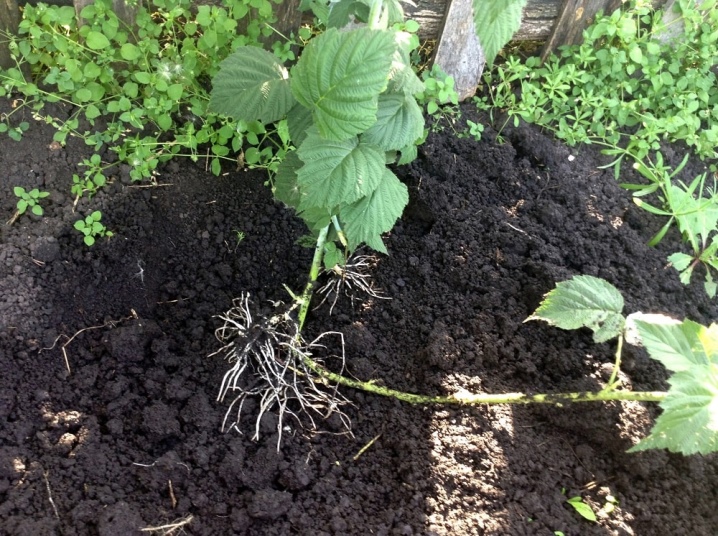
Spring reproduction by "nettles"
Active vegetation of the bush with the onset of the first warm days can bring many benefits. In this case, novice gardeners should pay attention to the young growth that forms at the base of the raspberry tree. It resembles nettle in appearance, hence the unusual name of the method. Such shoots are good for transplanting if they already have 2 true leaves, and reach a height of 100 mm.
Recommendations for work.
- Choose a sprout - "nettles". Slightly break the soil at its base, freeing the underground part of the stem by 30 mm.
- Cut with a sharp, clean knife... Place the sprout in a rooting stimulant solution.
- Prepare a container with a sand-peat mixture. Place the sprouts in the substrate, moisten it abundantly with warm water.
- Arrange a mini greenhouse. For this, a protective dome from a plastic bottle is placed over each shoot.
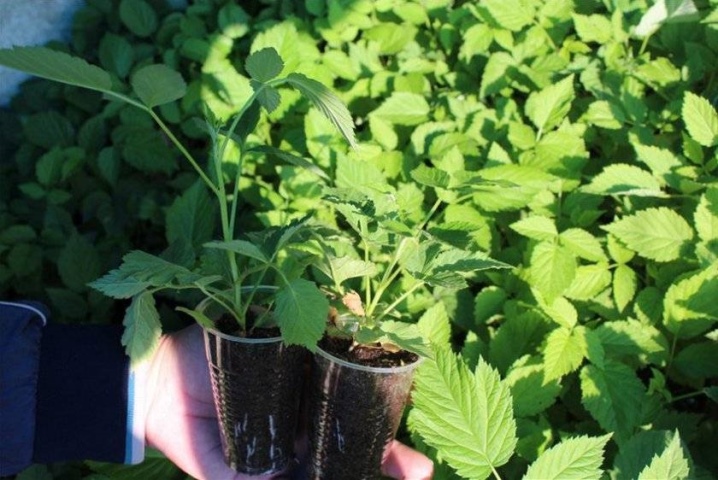
It takes up to 2 weeks to root remontant raspberries in this way. After that, the plants are transferred to garden soil. The optimal period for this is the first month of summer, when the raspberry is no longer threatened by frost.
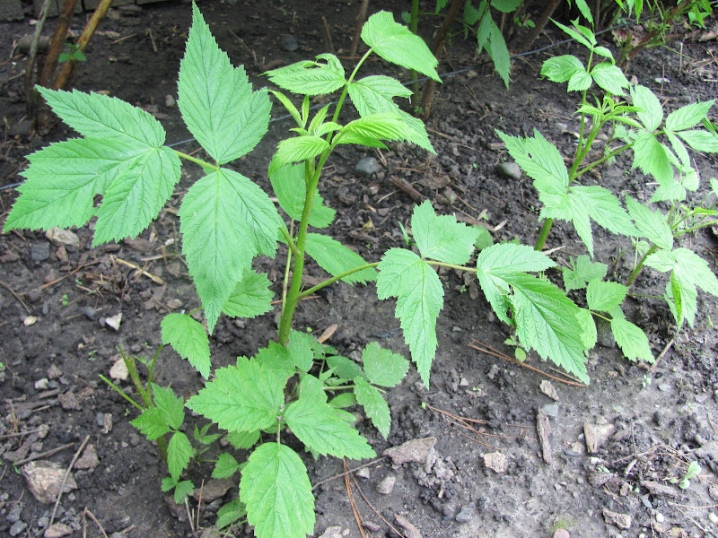
Reproduction by root suckers
This method is like dividing a bush. To obtain planting material, the plant has to be completely dug up, and then cut in the center into several parts. Each root offspring is sent to its own planting pit. The method is good because it gives a high survival rate of plants.
It is only important to provide them with good care, it is imperative to pre-treat the roots with stimulating compounds.
The plant chosen for the separation of root layers must be pre-fed with organic matter and mineral complexes. The resulting shoots require shelter for the winter. The procedure can be carried out both in the autumn and in the spring.
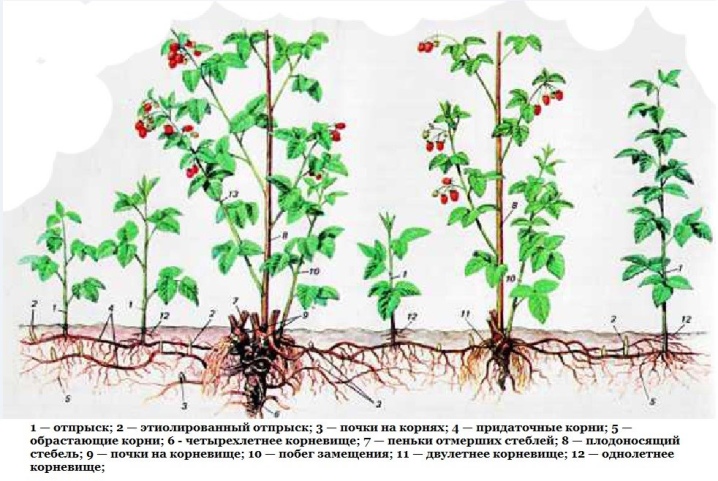
Care Tips
Repaired raspberries obtained after reproduction by any of the above methods are important to provide with proper care. Here's what the plants need.
- Periodic watering. It will be necessary to moisten the plants abundantly in early spring if there was little rainfall, as well as before flowering and in the fruiting phase. Watering is done so that the water saturates the soil to a depth of 50 cm.
- Top dressing... Repaired raspberries need nitrogen in the spring. In autumn, preference is given to potassium-phosphorus mineral complexes. You can add nitroammophoska or superphosphate.
- Fastening to the support. Due to the active growth of shoots, remontant varieties of raspberries are often grown on a trellis, especially if the planting was carried out by the trench method. With a bush garter, the shoots are tied, attached to single supports of the vertical type.
- Pruning... In regions with an early onset of cold weather, plants in the fall are cut to the root, and the crop is harvested once. In the south, remontant raspberries bear fruit twice, in the fall they are freed only from last year's shoots.


By following the rules of care, you can provide young remontant raspberries with excellent growing conditions after breeding.
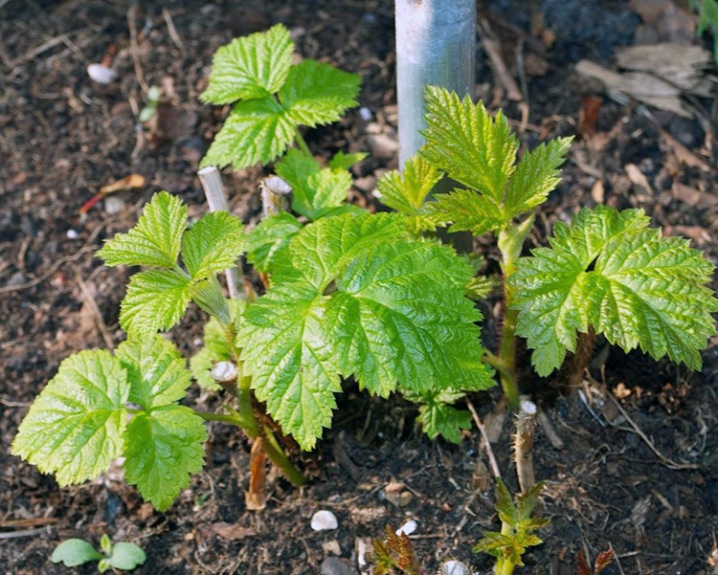











The comment was sent successfully.